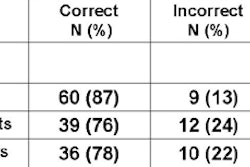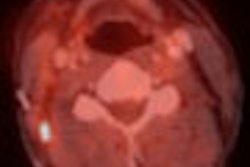ORLANDO, FL - A new meta-analysis presented at the American College of Cardiology (ACC) meeting confirms what many observers have already seen in their own images: With each additional row of detectors, CT is gaining ground in the noninvasive evaluation of the coronary arteries.
A steady stream of research has bolstered CT's case for a while, but the only published head-to-head study comparison of the modalities -- involving a four-detector CT scanner -- actually tilted slightly to MRI.
Now researchers from the Leiden University Medical Center in the Netherlands have essentially quantified the consensus wisdom by analyzing the results of 51 published studies that looked at either MRI or MDCT in comparison to conventional angiography.
In addition to showing MDCT's "substantial advantage" over MRI, the researchers confirmed that the progression from four- to 16-slice CT scanners is improving accuracy and enabling the visualization of additional coronary segments.
The researchers included all English-language publications of MDCT or MRI versus conventional angiography that included sufficient data to calculate sensitivity and specificity on a segmental basis. Their findings were presented this week by lead author Joanne Schuijf, a doctoral student of medicine at the university.
"You see that, particularly, sensitivity increases substantially with the number of detector rows," Schuijf noted as she presented the data. "Also, the percentage of segments of diagnostic quality rose significantly as well from four- to 16-slice."
Specifically, the collective performance of 16-slice CT in 11 published studies achieved a sensitivity of 88%, compared to 80% sensitivity in 11 published studies using four-slice CT.
The percentage of evaluable segments increased from 78% with four-slice to 96% with 16-slice CT, shoring up the modality's performance in a potentially critical area.
Overall, across 24 studies, MDCT achieved 85% sensitivity, 95% specificity, 76% positive predictive value, and 97% negative predictive value.
By comparison, MRI in 28 studies achieved an overall 72% sensitivity, 87% specificity, 63% positive predictive value, and 90% negative predictive value.
The researchers also broke down the MRI results based on the technique used by the original investigators.
While the five studies using 2D breath-hold techniques achieved the best sensitivity (80%), and the five studies using 3D breath-hold achieved the best negative predictive value (95%), they were outweighed by the 21 studies using 3D navigator techniques.
Based on their meta-analysis, the researchers concluded that MDCT "may be considered the technique of choice to noninvasively evaluate coronary artery anatomy."
But even if MR partisans continue to improve their results, CT will still have the edge for ease of use, Schuijf suggested.
"The problem with MR is it's very difficult and time-consuming," Schuijf said. "In very specialized centers they obtain good results, but it's not really out there (in the community)."
In comparison, she said, "With a CT machine, almost everyone with a bit of experience can get good results."
By Tracie L.
Thompson
AuntMinnie.com staff writer
March 8, 2005
Related Reading
For now, MRI edges CT in coronary angio race, December 20, 2004
Coronary stents: Safe with MRI, evaluable with CTA, November 10, 2004
Sixteen-slice scanning extends CT's reach in coronary arteries, March 8, 2004
Copyright © 2005 AuntMinnie.com




















